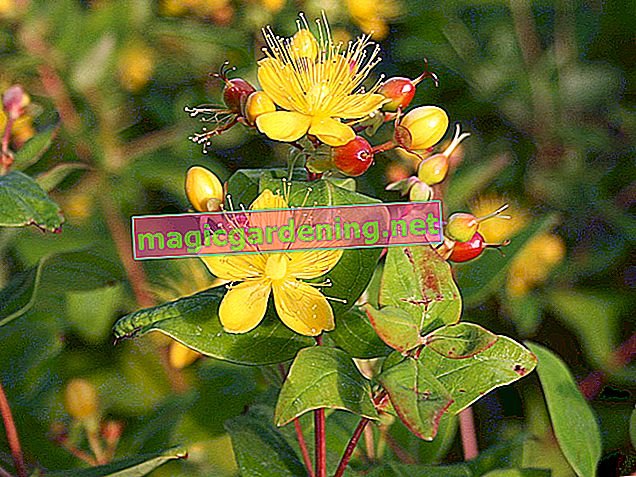
What is harvested?
You can basically harvest any part of St. John's wort. But it is gentler on the plant if you only harvest the flowers. All of the above-ground herbs, including stems and leaves, can also be harvested. The berries are usually not collected.
also read
- Harvest elderberry fruits correctly and process them perfectly
- Dry St. John's wort for later use
- Harvest and process rosemary
When is the harvest?
The active ingredient content in the plant is highest during flowering. Therefore, the perfect harvest period has come from late June to July. It is ideal to harvest the herb on dry days in the morning.
Cut off the cabbage and dry it
You can cut off all of the above-ground herbs (or just the flowers) with a pair of scissors or a knife, or just collect them with your bare hands. It is advisable not to cut more than about 20 cm - i.e. the upper shoots with the flowers. This will not weaken the plant too much.
The shoots are then tied together into small bunches and dried:
- hang upside down
- do not dry in the sun
- hang in a dry, airy and dark place
- Drying time: 1 to 2 weeks
- Alternative: dry in the dehydrator at 40 ° C
Uses: tea, tinctures, oils, and more
Whether fresh or dried, the leaves and flowers can be used in many ways. Here are a few ideas:
- Tea: the whole herb or the flowers - flowers taste more intense
- Drinks: the whole herb
- Oils: the flowers (they contain the main active ingredient hypericin)
- Liquor
- liqueur
- Herbal seasoning mixes
Tips
Thanks to its anti-inflammatory and wound-healing properties, St. John's wort oil is said to help with neurodermatitis and psoriasis, among other things.








